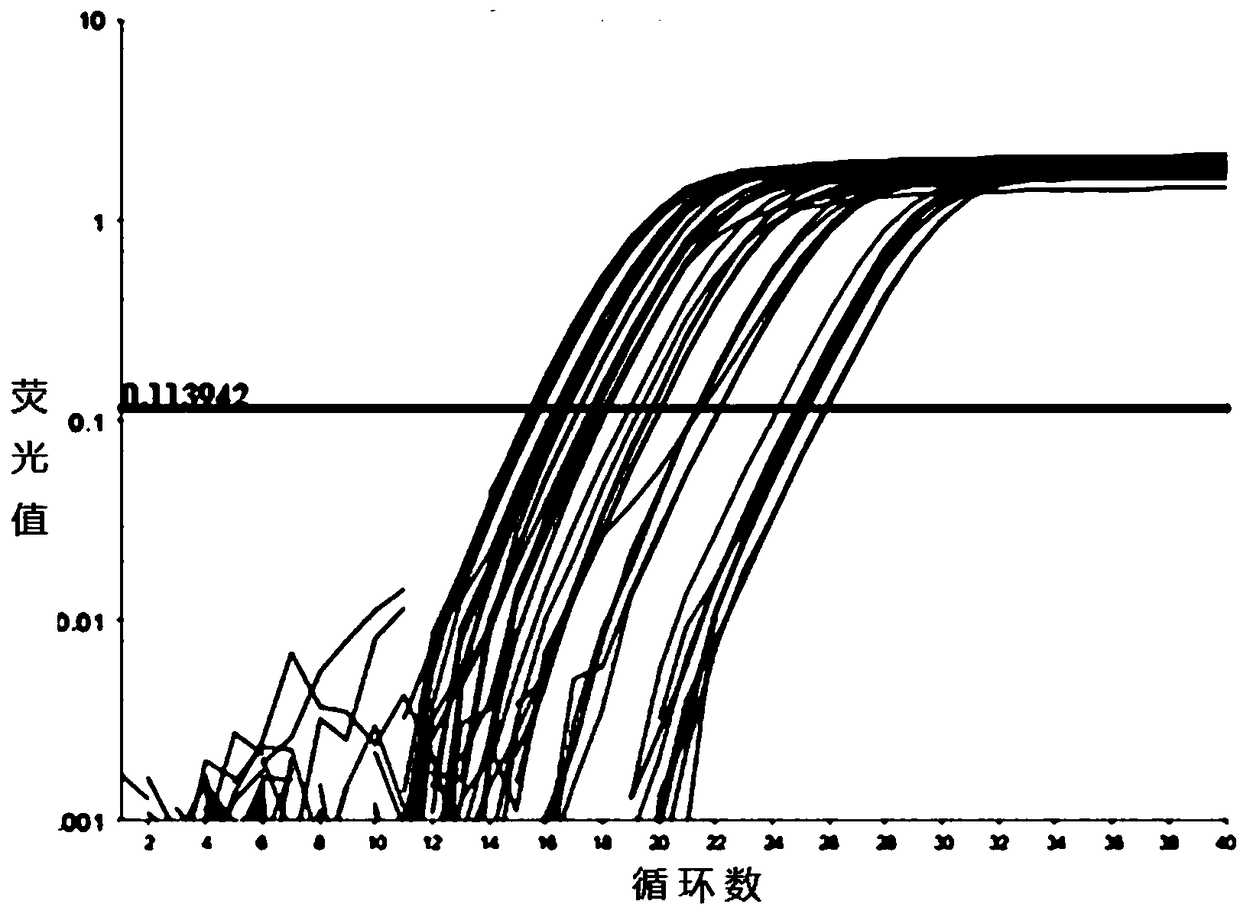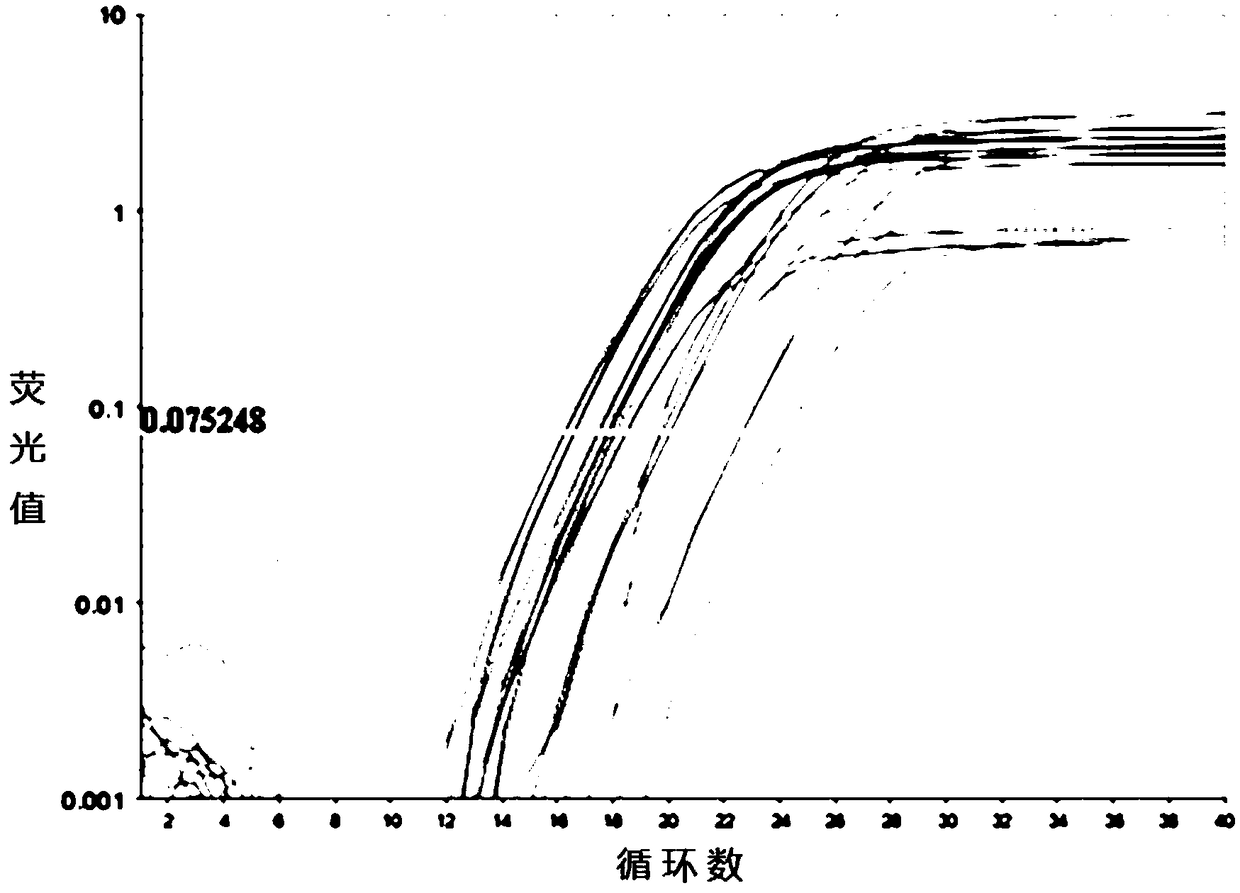Kit for detecting chronic sinusitis with nasal polyp subtype, and application of CST1 gene as biomarker
A chronic sinusitis and kit technology, applied in the field of biomedicine, can solve problems such as difficulty in batch operation, time-consuming, patient fear, etc., and achieve the effects of saving labor costs, saving medical costs, and solving human errors.
- Summary
- Abstract
- Description
- Claims
- Application Information
AI Technical Summary
Problems solved by technology
Method used
Image
Examples
Embodiment 1
[0065] A kit for detecting subtypes of chronic sinusitis with nasal polyps, comprising the following reagents:
[0066] Reagents for extracting RNA from nasal polyp tissue: 20mL RNA extraction solution Trizol or RNAiso Blood or RNAiso Plus or others containing phenol, guanidine isothiocyanate, 8-hydroxyquinoline, guanidine isothiocyanate, β-mercaptoethanol, etc. Substances that can rapidly disrupt cells and inhibit nucleases released from cells; 2mL of chloroform; 20mL of isopropanol; 40mL of 65-90% ethanol; 5mL of RNase- and DNase-free water;
[0067] Reagents for reverse transcription of extracted RNA into cDNA: 40 μL of reverse transcription mixture (containing enzymes required for reverse transcription, RNase inhibitors, random 6-nucleotide primers, polythymine, T repeat oligonucleotides , deoxyribonucleotide triphosphate mixture, buffer, etc.), 160 μL of RNase- and DNase-free water; the RNase- and DNase-free water is used to make up the system, dissolve, and dilute RNA; ...
Embodiment 2
[0070] A kit for detecting subtypes of chronic sinusitis with nasal polyps, comprising the following reagents:
[0071] Reagents for extracting RNA from nasal polyp tissue: 1mL RNA extraction solution Trizol or RNAiso Blood or RNAisoPlus or other substances containing phenol, guanidine isothiocyanate, 8-hydroxyquinoline, guanidine isothiocyanate, β-mercaptoethanol, etc. Substances that can rapidly disrupt cells and inhibit nucleases released from cells; 0.2 mL of chloroform; 0.2 mL of isopropanol; 0.2 mL of 65-90% ethanol; 0.05 mL of RNase- and DNase-free water;
[0072] Reagents for reverse transcription of extracted RNA into cDNA: 2 μL of reverse transcription mixture (containing enzymes required for reverse transcription, RNase inhibitors, random 6-nucleotide primers, polythymine, T repeat oligonucleotides , deoxyribonucleotide triphosphate mixture, buffer, etc.), 7 μL of RNase- and DNase-free water; the RNase- and DNase-free water is used to make up the system, dissolve, a...
Embodiment 3
[0075] A kit for detecting subtypes of chronic sinusitis with nasal polyps, comprising the following reagents:
[0076] Reagents for extracting RNA from nasal polyp tissue: 0.1mL RNA extraction solution Trizol or RNAiso Blood or RNAiso Plus or other containing phenol, guanidine isothiocyanate, 8-hydroxyquinoline, guanidine isothiocyanate, β-mercaptoethanol 0.05mL of chloroform; 0.015mL of isopropanol; 0.0075mL of 65-90% ethanol; 0.01mL of RNase- and DNase-free water ;
[0077] Reagents for reverse transcription of total RNA into cDNA: 1 μL of reverse transcription mixture (containing enzymes required for reverse transcription, RNase inhibitors, random 6-nucleotide primers, polythymine, T repeat oligonucleotides, Deoxyribonucleotide triphosphate mixture, buffer, etc.), 0-10 μL of RNase- and DNase-free water; the RNase- and DNase-free water is used to make up the system, dissolve, and dilute RNA;
[0078] Reagents for real-time fluorescent quantitative PCR reaction of CST1 gen...
PUM
 Login to View More
Login to View More Abstract
Description
Claims
Application Information
 Login to View More
Login to View More - R&D
- Intellectual Property
- Life Sciences
- Materials
- Tech Scout
- Unparalleled Data Quality
- Higher Quality Content
- 60% Fewer Hallucinations
Browse by: Latest US Patents, China's latest patents, Technical Efficacy Thesaurus, Application Domain, Technology Topic, Popular Technical Reports.
© 2025 PatSnap. All rights reserved.Legal|Privacy policy|Modern Slavery Act Transparency Statement|Sitemap|About US| Contact US: help@patsnap.com



